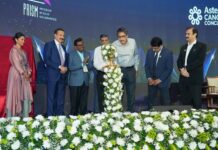Pune December 13, 2013: As our MIT India project gained its stride, and MIT won tremendous international acclaim for the vision and leadership it demonstrated in promoting open education, the folks at Harvard were feeling jealous. They wanted their own playground to contribute and to show off!
Against that backdrop, we founded our ambitious medical education project aimed at training millions of doctors, enough to make universal, quality healthcare a reality in India.
Harvard Medical School, with its vast resources, became our partner, contributing breadth of educational content that ranged from the basic to the most advanced in multiple disciplines of medical science. Content included simulations, 3D models, films, lecture videos, virtual reality renditions, and other immersive forms of presentation to teach everything from heart surgery to cancer cell mutation.
Our two partners in the project were, of course, Doctor At Hand and Doctor On Wire.
Doctor At Hand had created an incredible knowledgebase, which we licensed and used to train our students. During the first two years of their training, students were assigned to a village to work at a Doctor At Hand pharmacy for three months each year and shadow a pharmacist.
They spent the rest of their time during those first two years learning theory in a classroom setting, using the superb content developed by Harvard. Some of the curriculum was structured as monitored self-learning, some was distance learning, and some was in-class faculty.
Doctor On Wire, on the other hand, became our training hospitals, with the 20 doctors at each Doctor On Wire hub supporting the hands-on education of 100 students. From years three to five, students shadowed a doctor and developed a specialization.
As we trained thousands of students through this program, these students then helped scale Doctor On Wire. Starting in 2012, every hub produced 100 doctors each year who could support five new hubs.
Who paid for the education of these young doctors? Well, we developed an excellent education finance scheme with HSBC that provided student loans on attractive terms. The loan repayment scheme was also set up directly with Doctor on Wire such that as each student joined as an employee, they were automatically enrolled in a 10-year repayment program.
There were also a series of foundation grants and fellowships. The Gates Foundation gave a major grant to finance the education of 100,000 students. The major pharmaceutical companies each gave grants to support an average of 10,000 students. Our target number for 2020, however, was to train 600,000 doctors to staff 30,000 Doctor On Wire hubs. It was an ambitious goal, but with the help of the various partners we were able to achieve it.
The collaboration with Harvard Medical School also gave us unique advantages. Harvard sent faculty to spend their sabbaticals at one of the Doctor On Wire hubs. Over time, other universities started doing the same.
We did a surprisingly good job tackling heart and lung problems, eye and ear issues, and reproductive and pediatric health problems.
Cancer and neurology were harder to address. We had a limited number of doctors trained in cancer treatment. Those who were trained were making such ridiculous amounts of money that it was difficult to attract them to these remote locations.
In 2012, a wonderful white-haired man – an oncologist from Massachusetts General Hospital in Boston – came to us with a proposal.
Dr. Wilson offered to quit Mass General and run a cancer training program for us. His only condition was that we would set up his facility in the heart of the Himalayas.
We established Dr. Wilson’s training center in a small town in Sikkim. It was a truly magical place surrounded by the most magnificent panorama. We sent a group of 100 third-year students to train under Dr. Wilson for the next three years. This group later helped us jump-start the cancer programs at the hubs.
Dr Wilson stayed with us till last year, then returned to Boston. The Sikkim center is now run by one of his favorite students, and is a place where we impart advanced cancer training. Faculty from all over the world like to spend sabbaticals there. After all, it is also a beautiful vacation spot, and those into spirituality enjoy the adjacent Pemayangtse monastery.
In fact, we learned that creating advanced training centers in attractive spots helps us get international faculty. We now have similar centers for cardiac surgery in Almora and neurology in Dharamsala.
In 2020, we have trained 600,000 doctors while also building a profitable, sustainable medical education system for India – our gift, Harvard’s pride. CCI Newswire
























